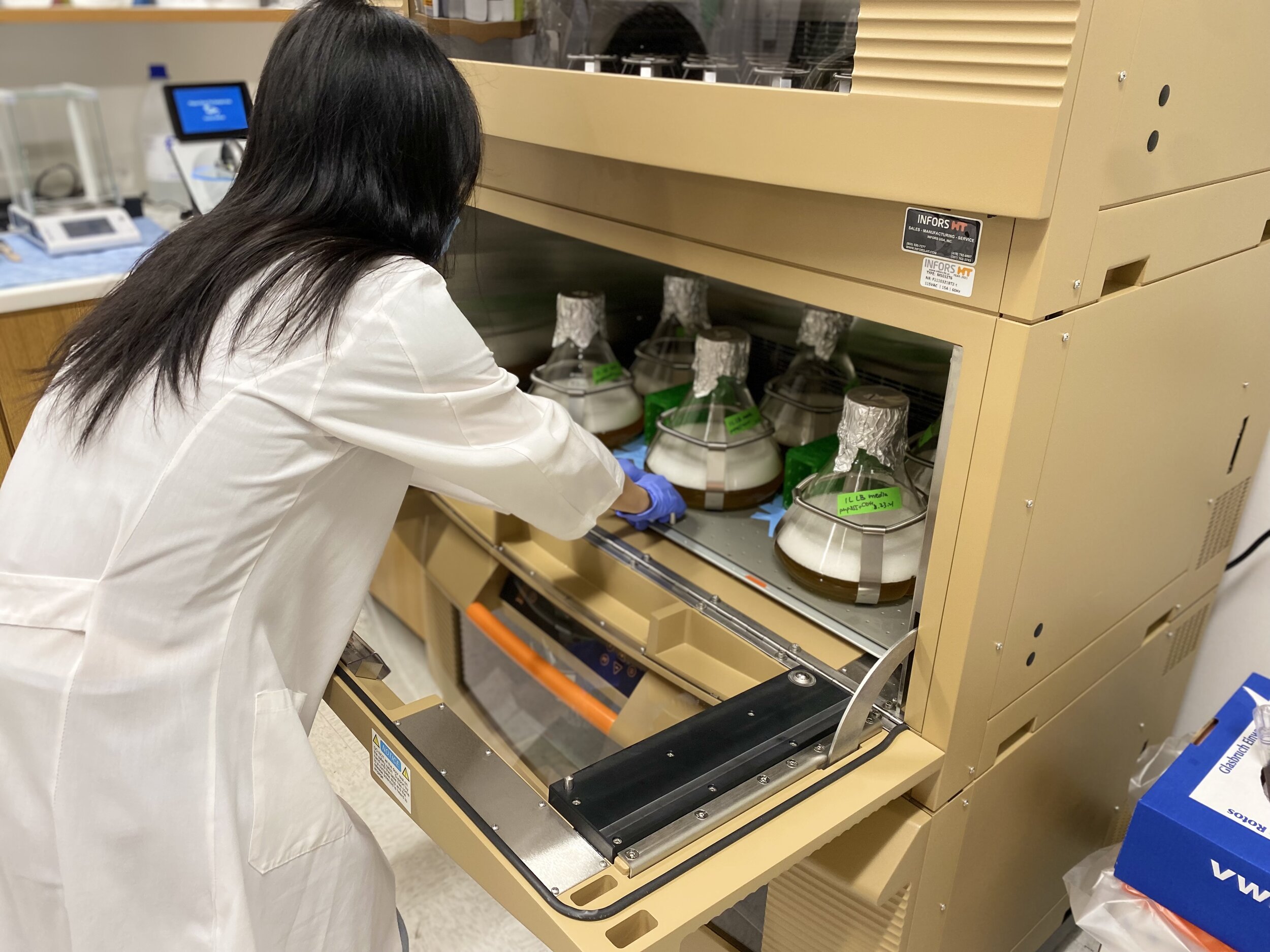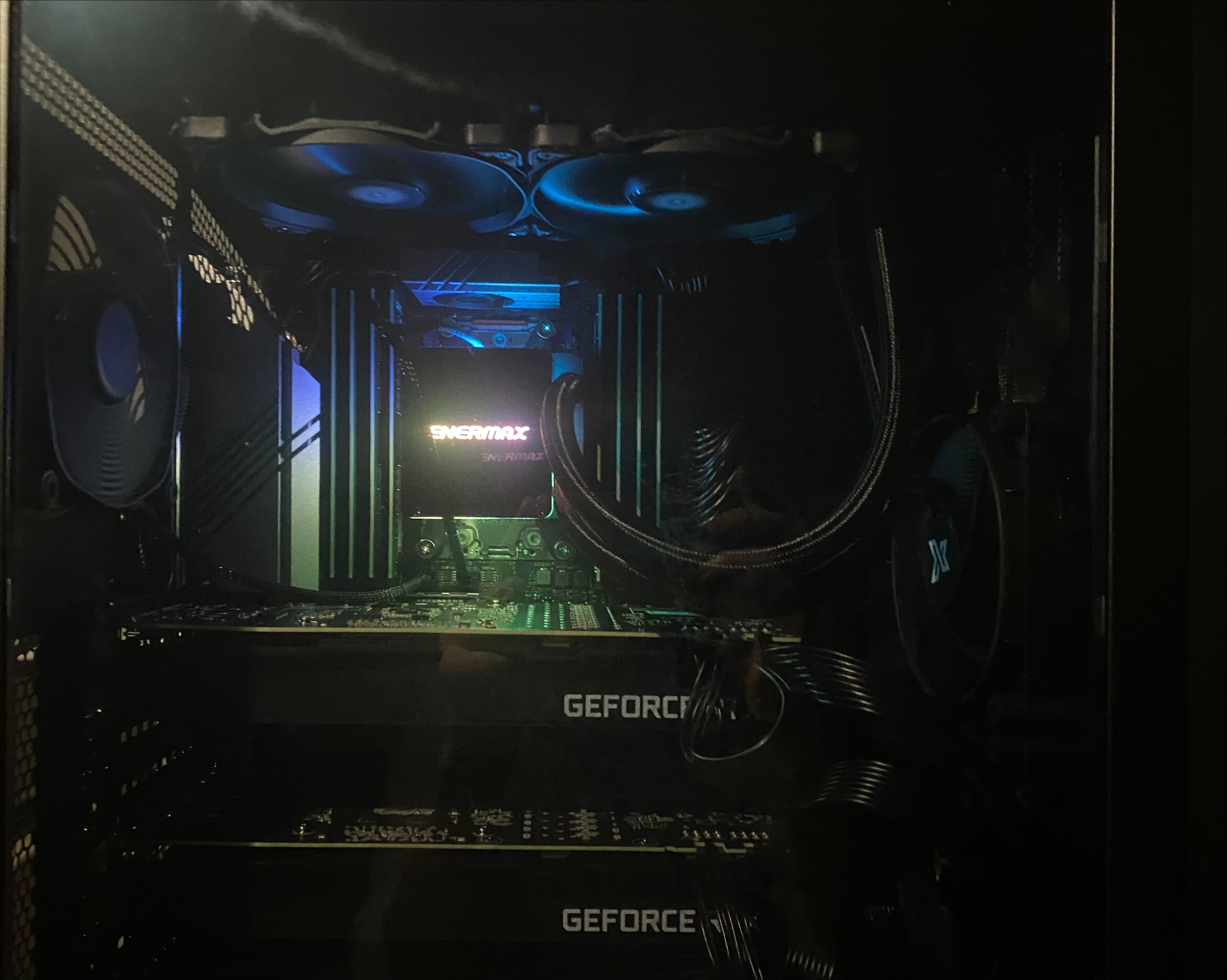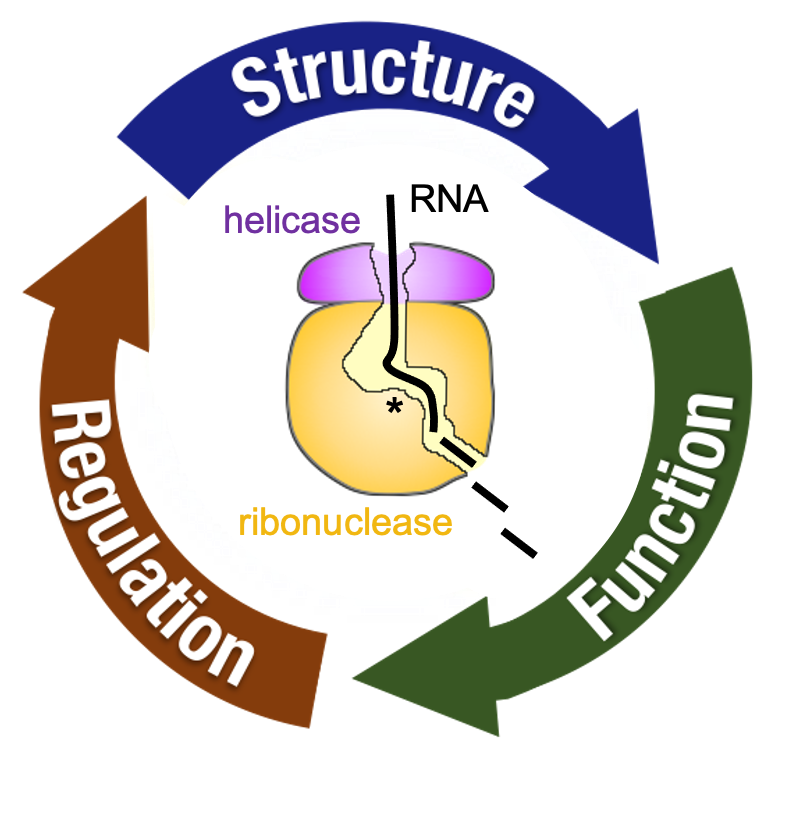
Research
-

Research Philosophy
-

Structural Biology
-

Enzymology
-

Cell Biology
Uncovering the molecular cues that control ribonucleoprotein assemblies.
Ribonucleases are ubiquitous and drive diverse molecular pathways to promote cellular fitness and survival. RNA processing and decay often require a series of sequential chemical reactions to convert substrate into product while preventing the accumulation of deleterious intermediates. To ensure accurate and efficient chemistry, RNA editing enzymes often assemble into multi-component molecular machines (e.g. ribonucleoprotein assemblies). While our understanding of these mechanisms is limited, technological advances, such as the “resolution revolution” in cryo-electron microscopy (cryo-EM), have made it possible to uncover their structural organization, function, and regulation with unprecedented detail.
To understand how RNA processing and decay complexes are dynamically regulated, we combine hybrid structural biology (e.g. cryo-EM, X-ray crystallography, SAXS, XL-MS) with enzymology, molecular biology, and cell biology. This multidisciplinary research program uncovers the regulation of ribonucleoprotein assemblies at the atomic, molecular, and cellular levels.
Translational Control
The Schlafen (SLFN) family of host restriction factors play a central role in stress-induced gene regulation, contributing to antiviral defense, differentiation, chemosensitivity, and more. Many SLFN proteins mediate translational repression through RNA interactions that remain poorly understood. Our research focuses on uncovering the molecular signals that regulate SLFN endoribonuclease activity to better understand how these underexplored RNA binding proteins alter the proteome and influence cell fate.
Mitochondrial RNA Decay
Mitochondria harbor numerous ribonucleoprotein assemblies devoted to RNA processing and decay. The significance of these higher-order complexes is underscored by their link to mitochondrial pathologies, including neurological disorders, cancers, and metabolic diseases. While mitochondrial RNA editing factors are coming to light, the mechanism controlling the bulk of mitochondrial RNA (mtRNA) decay remains poorly defined. We apply an integrated research program to investigate the mitochondrial RNA decay machinery. Our work will uncover the molecular basis for mitochondrial RNA dysregulation in human disease.













